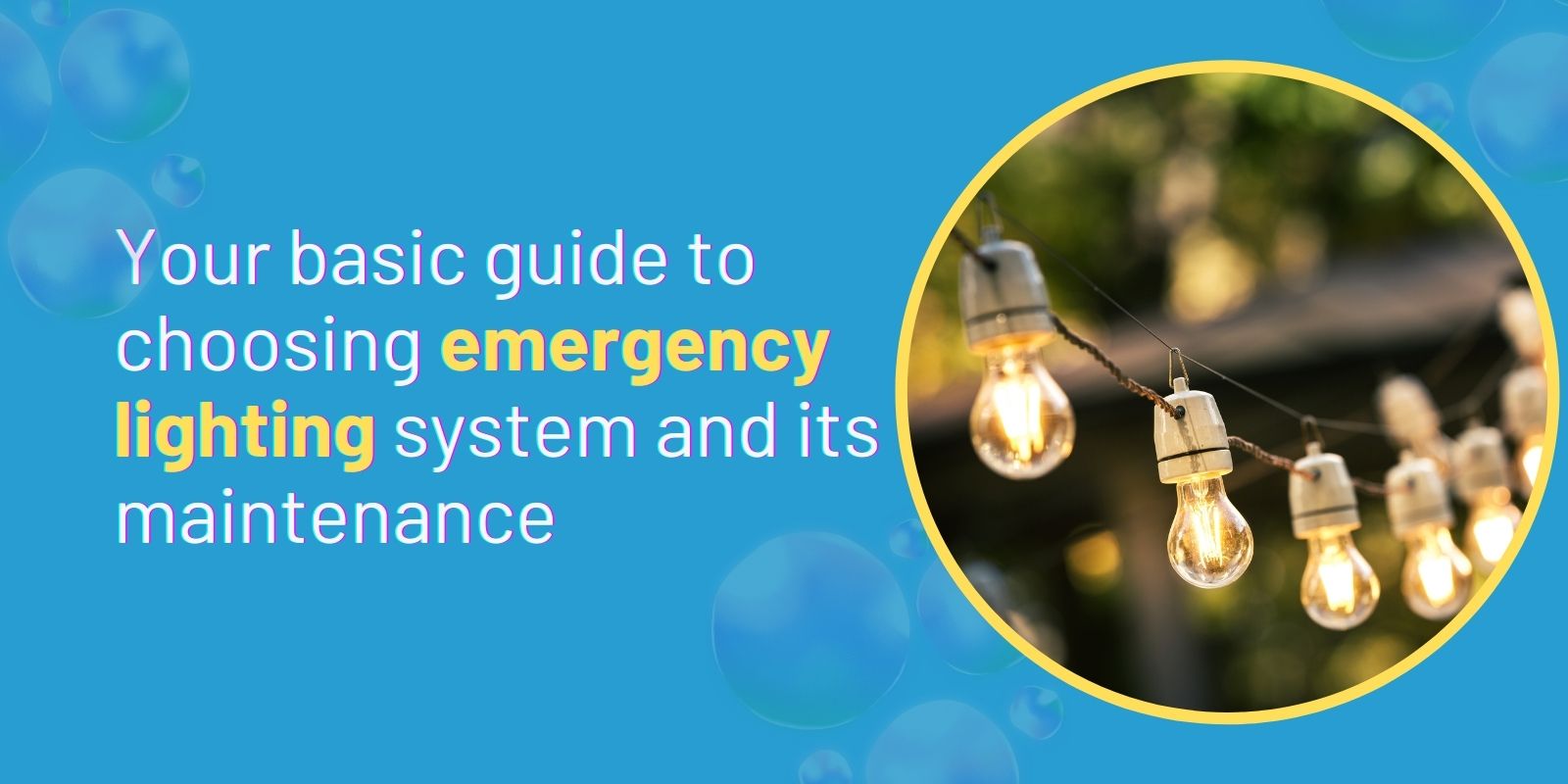An emergency lighting is a device that is powered by a battery. It gets automatically switched on when there is a power outage in a building. There exist emergency lighting standards for high occupancy residential properties like dormitories, hotels and others. Emergency light is also required in new commercial buildings to implement greater security and a safer environment.
Every emergency lighting system is based on the same design; each and every device remains connected to the power supply system of a building. This is how the internal battery of an emergency lighting device gets charged continuously. Thus the light remains on even when there is a power outage in the building. This helps occupants locate the exits easily and evacuation of a premise becomes faster and safer.
Different types of emergency lightings for installation
The most reliable means to install a proper emergency lighting system is to engage a trained and skilled professional. A professional is supposed to know the relevant standards and can stick to the guidelines easily. Emergency lighting system can be divided into two broad categories – emergency escape lighting and standby lighting. There are other varieties as well. In the following sections let us explore few major types of emergency lighting system.
- Emergency escape lighting – This type of lighting system provides illumination to ensure safety of people who are in the circumstance of leaving a location.
- Standby lighting – This type of emergency lighting is never any legal requirement. This enables continuation of normal activities if and when the main supply fails.
Emergency escape lighting is again categorised into three sections which are as following –
- Escape route lighting – This type of emergency escape lighting indentifies the escape route for you and includes fire exit signs and emergency lighting bulkheads.
- Open area lighting – This type of emergency escape lighting is also called anti panic lighting. It ensures sufficient illumination for occupants so that they can identify the escape route easily.
- High risk task area lighting – This category of the product provides illumination to ensure safety of people who got (or are) involved in a potentially dangerous process.
Emergency lighting and legal requirement
Having emergency lighting installed and it checked and maintained at regular intervals are both legal necessities in Ireland. It is also important that every new system must be designed, installed and even maintained as per the IS3217: 2013 (A1: 2017) standard. There are also official recommendations related to the types of emergency lighting systems and their minimum durations of backup for different types of premises.
About emergency lighting installation outside the building
In order to create a safe and favourable environment for everyone, including employees, visitors and customers alike, both the interior and the exterior lighting systems should work in alignment. Even though an emergency situation may never take place in your premise yet you must be prepared for it. External emergency lighting system should illuminate the surroundings enough to provide everyone with fast and easily accessible routes to safety.
There exist varieties of egress lighting fixtures, like exit signs and egress pathway signs. All these varieties can be integrated into emergency lighting system to guide people easily toward a safe place outside the premise.
- Area egress lighting systems – This range of products is installed around a building to illuminate specific areas. Area egress lighting includes lamps or bollards. There are instances where people require locating a safe place far away from the structure. Egress lighting also acts as a normal pathway lighting installed at building entrances under normal circumstances when there is no emergency.
- Egress lighting mounted on building – A professional with years of experience in emergency lighting installation explains this variety of products is installed on the building itself and includes wall mounted spotlights, luminaries and scones. These products illuminate specific areas where occupants can assemble safely following an evacuation.
Is it possible to switch emergency lighting?
You can use a switchable emergency light just like a regular light. You can turn it on and off pretty easily. This variety of the electrical lighting product is flexible to use. You can leave it forever if you want to. A switchable emergency lights wiring come into service frequently in the time of power failure or power outage. It gets its necessary power from its backup battery.
About emergency lighting installer
In order to install an emergency lighting system there is no legal binding to hire a professional installer. However the system that you install must comply with strict set of rules and regulations. If your system fails complying with the rules then you are likely to face hefty penalties. In worse case scenarios one may also face prosecution.
In order to be on the safer side you should better hire an accredited fire and security installer to carry out the job. This ensures that your system is designed and installed as per the latest compliances. Thus you are safe from paying penalties or facing prosecution.
Certifying for emergency lighting jobs
The shape, size or nature of your business does not matter when emergency lighting systems are concerned. As per the NSAI (National Standards Authority of Ireland) directives you have to properly maintain and test a life safety system on regular basis. This includes an annual testing of your emergency lighting as well as a quarterly inspection.
When you engage a proficient safe electric registered company it becomes easier to ensure whether your lighting system complies with every relevant standard. Highly trained and skilled electricians from this safe electric registered company will inspect your emergency lighting systems and issue certificate that your systems are at par with all the regulatory standards and necessities assures an emergency lighting wiring expert having years of experience in the trade.
Testing of emergency lighting systems
Testing of an emergency lighting is all about checking the system itself along with the luminaries to ensure those in fine working condition by simulating power cut from the mains. As a result the emergency lighting system has to work through the battery supply.
Regular testing benefits
When an emergency lighting system undergoes regular testing procedures certainly there are some benefits.
Saving lives as well as property becomes easier if all the components of a lighting system are well-maintained and work properly.
Regular testing and maintenance of emergency lighting system can increase the insurance coverage of a property assure professionals who keep testing emergency lightings in London on regular intervals. Insurance do not usually cover fire damages if there is no certificate to prove that routine inspection and maintenance were performed on the emergency lighting system at short and regular intervals.
How often is it necessary to test emergency lighting systems?
Manufacturers normally recommend that emergency lights and exit signs should be tested and inspected monthly, quarterly and annually. Monthly testing may involve a short functional test of the system.
In quarterly tests you should turn on every emergency light for about half an hour. This must be done using the battery of the system. The same is to be done for annual tests although in these cases you should leave each light on for 3 hours explains a professional who deals in emergency lighting in commercial building across London.

